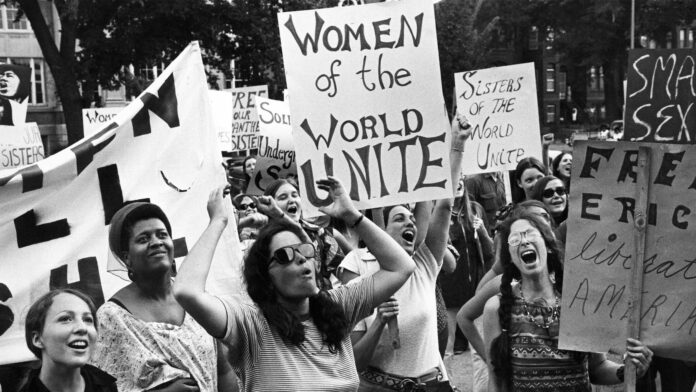In contemporary discourse, the delineation between feminism and Men’s Rights Activism (MRA) has become sharply pronounced, often culminating in conflict. Feminism, fundamentally rooted in advocating for women’s rights and addressing systematic inequalities, has garnered extensive support across various demographic spectrums. Conversely, Men’s Rights Activists posit that men’s issues in society are neglected or misrepresented, engendering a confrontation with feminist ideologies. This article endeavors to elucidate the substratum of the conflict between these two movements, presenting an analysis of their philosophical underpinnings, sociocultural ramifications, and the complexities inherent in their relationship.
The Historical Trajectory of Feminism and Men’s Rights Activism
The feminist movement emerged in the late 19th and early 20th centuries, primarily advocating for women’s suffrage and broader civil rights. Over the decades, feminism has evolved through multiple waves, with each edition addressing varying dimensions of gender equity—from the legal and political rights of women in the first wave to the intersectionality and global perspectives of the contemporary discourse. Modern feminism seeks to dismantle patriarchal structures that perpetuate oppression and inequity.
In contrast, Men’s Rights Activism gained traction in the late 20th century, often emerging as a counter-narrative to feminist advancements. Advocates within this sphere argue that societal structures inherently disadvantage men in certain contexts—such as family law, education, and mental health. They assert that the prevalent social narrative favors women’s experiences and overlooks the challenges faced by men, leading to a perceived erosion of men’s rights. This foundational divergence sets the stage for ongoing contention between the two movements, as ideological priorities frequently clash.
Contrasting Worldviews: Gender Dynamics and Social Constructs
At the heart of the conflict lies a fundamental debate regarding the interpretation of gender dynamics. Feminism elucidates the systemic nature of gender disparities, contending that patriarchal structures privilege men at the expense of women. Feminists advocate for equity, arguing that societal change necessitates a reevaluation and dismantling of established norms that inhibit women’s opportunities.
Yet, Men’s Rights Activists nuance this narrative, asserting that societal progress for women has often resulted in the marginalization of men’s issues. MRAs highlight statistics revealing higher rates of suicide among men, unjust family court rulings, and stereotypes that curtail men’s emotional expression. They argue that these realities are often obscured by dominant feminist discourses, leading to what they perceive as an imbalance: while women’s rights are championed, men’s struggles remain underrepresented.
This dichotomous interpretation of gender dynamics can exacerbate tensions. Feminists might view MRAs as perpetuating victim narratives that detract from systemic injustices against women. Conversely, MRAs may regard feminists as disregarding legitimate male grievances in favor of a singularly focused agenda. These perceptions further entrench stalemates, yielding an impasse wherein dialogue is often overshadowed by mischaracterization. Exploring these contrasting perspectives reveals not only a widening gulf but also an opportunity for nuanced understanding.
Communication Breakdown: Language and Rhetoric
The disconnect between feminism and Men’s Rights Activism is amplified by language—specifically, the rhetoric employed within each movement. Feminists frequently utilize terms such as “patriarchy,” “privilege,” and “empowerment,” which reflect a framework aimed at addressing structural inequalities. These terms are often laden with emotional resonance, evoking a sense of urgency for systemic change. However, this same language can be perceived as exclusionary or confrontational by MRAs, who argue that it dismisses men’s experiences and exacerbates feelings of alienation.
On the other hand, MRAs often employ language that emphasizes perceived injustices faced by men, using terms like “misandry” or “gender bias” to articulate their positions. This can lead to a defensive posture among feminists, who may interpret such discourse as adversarial or dismissive of women’s struggles. This antagonistic vocabulary entrenches misunderstandings, rendering constructive dialogue increasingly elusive.
Efforts Toward Common Ground: A Path Forward
Despite the entrenched conflict, there remains potential for convergence between feminists and Men’s Rights Activists. Both movements are ostensibly committed to addressing inequality, albeit from diverging vantage points. By reframing their narratives to recognize shared goals—a mutual commitment to societal equity—there exists the opportunity for collaboration.
Interdisciplinary dialogues that include sociologists, psychologists, and gender studies scholars can contribute to a more comprehensive understanding of gender issues. Collaborative initiatives that explore the intersections of gender, mental health, and societal expectations could yield valuable insights applicable to both movements.
Moreover, acknowledging the complexity and fluidity of gender itself can facilitate a more inclusive discourse. Emphasizing the importance of emotional literacy and mental health for all genders provides both feminists and MRAs a platform from which to engage collaboratively, challenging normative constructs that confine expressive capabilities based on gender.
Concluding Thoughts: Beyond the Conflict
The conflict between feminists and Men’s Rights Activists encapsulates a broader societal struggle over the interpretation of gender dynamics and rights. While the tensions are palpable, they also represent an opportunity for dialogue and growth. The pursuit of equity for all genders requires the dismantling of rigid categorizations that inhibit understanding. Through inclusive discourse and collaborative efforts, the potential exists to transcend division, paving the way for a more equitable society for everyone.
Ultimately, it is crucial to recognize that the discourse surrounding gender is not binary, but rather a multifaceted and evolving conversation. Addressing the underlying issues faced by all individuals, irrespective of gender, necessitates a unified approach that values diverse perspectives and experiences. Only through collective engagement can society hope to construct a framework that genuinely accommodates the complexities of gender and the rights of all individuals.





























